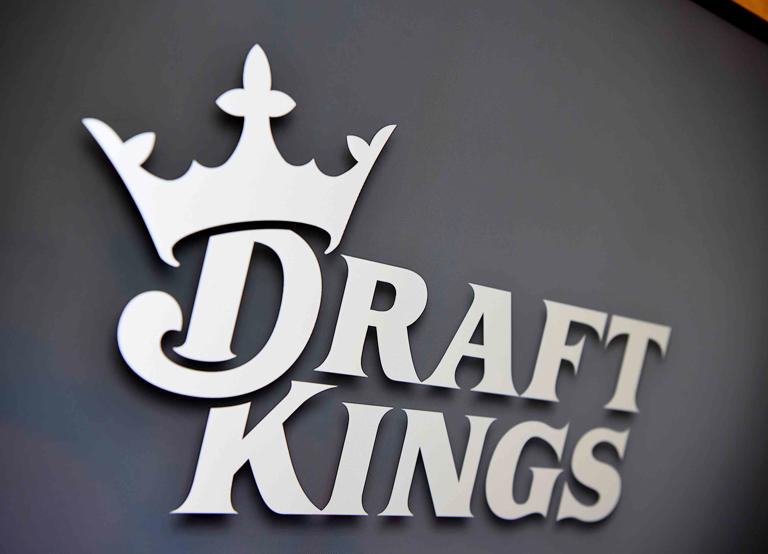Shares of DraftKings Inc. (DKNG) saw a significant drop on Friday after the online sports gambling platform announced a downward revision of its profit forecast and introduced a new surcharge on winnings for bettors located in high-tax states. The company’s decision to implement this surcharge is part of a broader strategy to bolster its earnings amid regulatory challenges and shifting market conditions.
DraftKings’ Revised Profit Forecast and New Surcharge
In a detailed letter to shareholders, DraftKings revealed its plan to impose a “gaming tax surcharge” on net winnings for customers in states where the gambling tax rate exceeds 20%. This move is specifically targeted at states with multiple sports betting operators, such as Illinois, which imposes some of the highest tax rates on gambling winnings in the country. The company assured that the surcharge would be “fairly minimal” for most customers, but it is anticipated to contribute to an increase in adjusted earnings before interest, taxes, depreciation, and amortization (EBITDA) in the coming years.
Strong Quarterly Performance Amidst Challenges
Despite the negative impact on its stock price, DraftKings reported a strong performance for the second quarter of the fiscal year. The company achieved adjusted earnings per share of $0.22, surpassing analysts’ expectations. Revenue for the quarter jumped by 36.2% year-over-year, reaching $1.10 billion, which was also higher than anticipated. This significant revenue growth was driven by several factors, including the acquisition of the Jackpocket lottery app, the addition of new customers, and expansion into new jurisdictions.
In addition to these financial results, DraftKings announced a substantial $1 billion stock buyback plan. This initiative is designed to enhance shareholder value and reflect the company’s confidence in its long-term prospects, despite the recent market volatility.
Revised Revenue and EBITDA Guidance
Alongside the positive revenue report, DraftKings adjusted its full-year revenue forecast upward to a range of $5.05 billion to $5.25 billion, compared to the earlier estimate of $4.80 billion to $5.00 billion. However, the company also revised its adjusted EBITDA guidance downward, now projecting a range of $340 million to $420 million, down from the previous forecast of $460 million to $540 million. This adjustment reflects the anticipated financial impact of the new surcharge and other factors affecting profitability.
Market Reaction and Investor Sentiment
The announcement of the surcharge and the revised EBITDA guidance led to a notable decline in DraftKings’ stock price. Investors are concerned about the implications of the surcharge on customer behavior and the potential erosion of profit margins. The stock’s drop is also attributed to the broader market reaction to the company’s lowered profit expectations and the regulatory challenges it faces.
While the strong revenue growth and the $1 billion stock buyback plan signal robust business momentum, the market’s focus has shifted to the potential financial strain of the surcharge and the revised earnings forecast. The company’s ability to effectively manage these challenges and achieve its revised targets will be crucial in determining its stock performance in the near term.
Future Outlook
DraftKings’ decision to introduce a surcharge for high-tax states represents a strategic effort to mitigate the impact of elevated tax rates on its profitability. The company’s strong quarterly results and increased revenue outlook indicate ongoing business growth, but the reduced EBITDA forecast and stock price decline highlight the difficulties the company is encountering.
Investors will be closely monitoring the effectiveness of the surcharge and its impact on DraftKings’ financial performance in the coming quarters. The company’s ability to navigate the regulatory landscape and meet its revised earnings targets will be key factors influencing its stock performance moving forward.
